Top 10 Patterns From Lake Champlain FLW
Category: article
Jul 2nd, 2019 by Keith Worrall
Modified Jul 2nd, 2019 at 6:34 PM
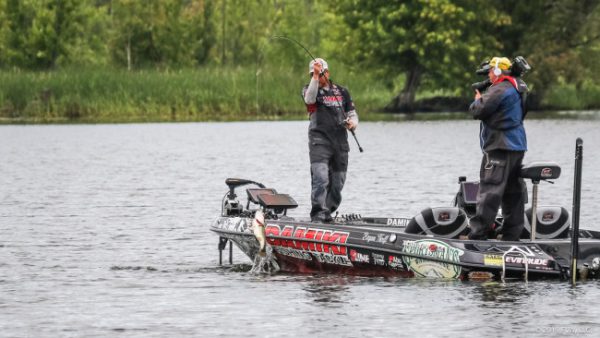
Bryan Thrift
July 1, 2019 by Curtis Niedermier
North or south? Smallmouths or largemouths?
Lake Champlain is the kind of fishery that forces pros to make difficult decisions about where to go and what color bass to target. This time around, in the FLW Tour 2019 finale, which was presented by T-H Marine, on the big Northern fishery, the decision was more interesting because there were spawning smallmouths everywhere up north, but the forecast was favorable for making the long run south to Ticonderoga to catch largemouths.
The largemouths won. Casey Scanlon ran to Ti every day and sacked up the winning fish. He was joined by the majority of the top 10.
Here’s how the week’s best performers made it happen.
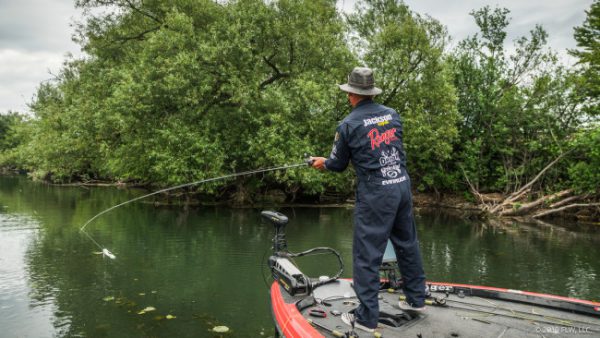
Eric Jackson
2. Jackson camps in one creek
Freestyle kayak legend Eric Jackson was the talk of the tournament on the final day thanks to his FLW Live antics and boisterous personality. Since turning pro in fishing a few years ago, Jackson has struggled, but this week he earned his first top 10 from a single creek south of Ticonderoga that was loaded with largemouths. Jackson found a pond that was draining out as the lake’s water level fell, and the fish in the pond were funneling out to several key spots in the creek.
“I had a drainage ditch and a lot of cover – trees and lily pads – and then I had a bridge,” Jackson says. “On that bridge, I had two bridge abutment sections that produced fish, and I had an eddy line that had a hump with a little bit of grass on top that produced fish. And then I also had a couple trees against the shore right below the bridge that produced fish.
“The water’s falling, so I think that’s a stopping point. That’s where the bait has to go through. They just wait for the bait to swim by and just eat it up. They were so fat. It was an all-you-can-eat buffet for them there.”
Jackson started the tournament catching fish with a sexy shad Strike King Tour Grade Swim Jig with a white Strike King Rage Menace Grub trailer. He was swimming it aggressively on the first day. As the tournament went on, he realized he could get some bites by letting the jig sink to the bottom. With that in mind on day three, Jackson added in a Strike King Ocho rigged weightless Texas-style on a Trokar 3/0 worm hook.
He used 50-pound-test TUF Line braid with a Cashion Kayak Series jig/worm rod for his swim jig and 20-pound-test fluorocarbon with a medium-heavy, 7-foot, 2-inch Cashion Elite rod for the Ocho.
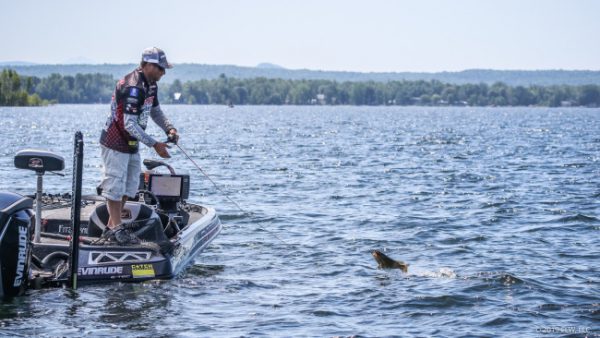
Bryan Thrift
3. Thrift stays north, works combo pattern
Bryan Thrift weighed in largemouths and smallmouths each day from Champlain’s northern end.
“I’ve been catching the largemouth on a walking bait on topwater the first 30 minutes of the day on scattered grass, just up in some milfoil in 6 or 7 feet of water,” Thrift says. “They weren’t schooling. I was catching largemouths on a 5-inch [watermelon candy] Damiki Stinger, Texas-rigged, dragging it through the grass. And then I was catching smallmouth on a 4-inch Damiki Armor Shad [in Tennessee shad].”
All of Thrift’s fish were around scattered milfoil with yellow perch.
The first three days, when it was calm and he could run around efficiently, Thrift fished a lot of water. During a much windier final day, he focused on five or six areas.
Thrift threw the topwater on his Fitzgerald Rods signature series frog rod and 15-pound-test P-Line PF Original with an Abu Garcia Revo STX reel. He threw the Stinger with 15-pound-test P-Line Tactical Fluorocarbon, a 7-foot, heavy Fitzgerald Stunner rod, and a Revo STX. He threw the swimbait on a 7-foot, medium-heavy Fitzgerald Stunner, an Abu Garcia Revo AL-F reel, and 8-pound-test P-Line Tactical Fluorocarbon.
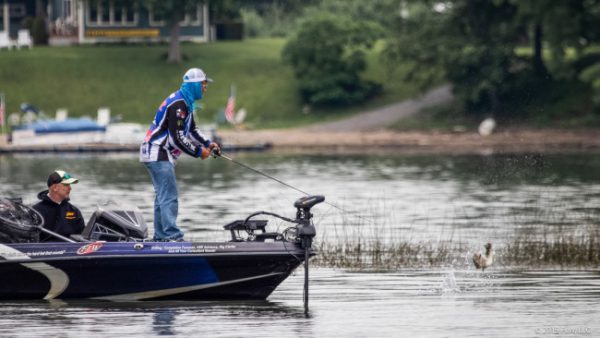
Chris Brasher
4. Brasher sticks to one key spot at Ti
Chris Brasher was in the Ticonderoga largemouth group. Like Jackson, Brasher relied on one key area – a creek mouth on the main lake. Though he caught a few fish in other areas, the creek mouth carried him through the tournament and produced all the fish he weighed in.
“There was a creek that has some clear water coming out of it, and it was mixing with the dirty water,” Brasher explains. “Basically, those fish were moving around depending on where the wind was and wherever that mud line was. There was a lot of bait in there; a lot of yellow perch. In practice, I noticed a lot of them following my square-bill in. Through the tournament I just kept adjusting and adjusting because I pounded on them. That was the biggest key.”
Brasher was able to expand his area a little bit by sliding up into a “corner” along the main-lake shoreline, but he kept returning to the juice after the fish had time to rest.
“Where that creek comes out, it’s 7 or 8 feet deep, and right where I was sitting it’s 2 feet deep,” he says. “There’s a little shelf there, and there’s grass growing where that lip comes up.”
As the fish moved with the bait and the mud line, Brasher moved with them, at times sticking fish on five or six casts in a row.
He caught the majority of his fish with a 6th Sense Crush 50X square-bill crankbait, then hammered them on a wacky-rigged Yamamoto Senko the final day. Brasher landed a few on a black and blue Black Angel Lures Swim Jig or by pitching a Texas-rigged Senko.
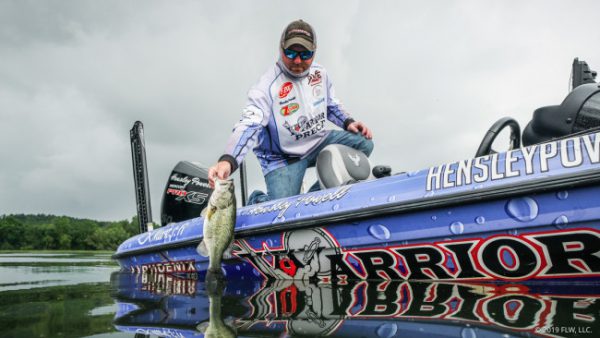
Hensley Powell
5. Powell parks on a spot with spawning alewives
The trend of finding a good area and sticking to it was common among the top finishers, but Hensley Powell took it a little further by poling down on a spot and basically staying put right there for four days. His area was located just south of Fort Ticonderoga, outside the creek where Jackson was fishing.
It’s a spot where Powell found spawning alewives in practice, though the baitfish were around but not spawning for the first three days of the tournament. Then, on Sunday, they were back in action, and Powell caught a 19-pound, 8-ounce limit.
“They just turned on,” Powell says. “They were back like they were in practice. I actually lost a giant today [Sunday] that would’ve culled a 3-pounder. I gave it my all.”
Powell weighed in a mix of largemouths and smallmouths.
“Where I’m fishing, because the alewives are spawning there, I caught largemouths, and then there’s a wolf pack of smallmouths that would just come up schooling four or five times during the day at different areas. So I fished for largemouths, but I’d have something ready to throw when they’d come up at any time. That’s how I lost that one big one.”
Powell caught his fish in 9 to 12 feet of water where the bass were pushing the alewives up next to the edge of some milfoil. He basically made the same cast over and over.
“I was reeling a ChatterBait and killing it, and they’d hit it as it was falling,” he says. “I just tried to imitate like something had hit one of those alewives and it was dying and falling. It was totally a reaction bite.”
Powell’s go-to ChatterBait was a 3/8-ounce Jack Hammer in chartreuse and white with a white ice Zoom Swimmin’ Fluke Jr. trailer. When the bite slowed, he tossed a 5-inch Trixster Custom Baits soft stick bait.
The only other tactic Powell tried was throwing the ChatterBait or a chrome/blue Strike King Sexy Dawg for smallmouths up north once he returned to the takeoff area.
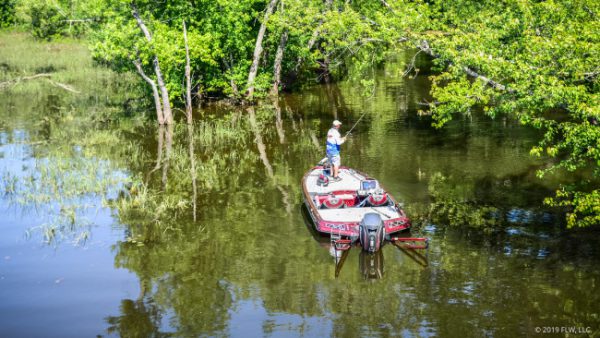
Daryl Biron
6. Biron finesse fishes wood in Ti
Daryl Biron is from Connecticut but considers Champlain to be his home lake. As a result of his experience on the fishery, Biron had about 50 spots to fish for largemouths down at Ticonderoga. He very slowly picked apart key pieces of cover with a wacky-rigged homemade soft stick bait in green pumpkin with purple and green flake, which he would cast to a target, let sink and then just “shook the crap out of it.”
“I was keying on wood,” Biron says. “A lot of the wood had some milfoil pushed up against it, so it gave it some shade. Sun made it better, so the afternoon bite was always better. When the sun came out, those fish tucked up underneath there, and it was a little bit easier to locate them.
“If it didn’t look right I didn’t run it,” says Biron of his strategy for choosing spots to fish. “If it was dirty water I stayed off of it.”
Biron’s best spots were on the main lake or very near it in small creeks where the water was a little deeper.
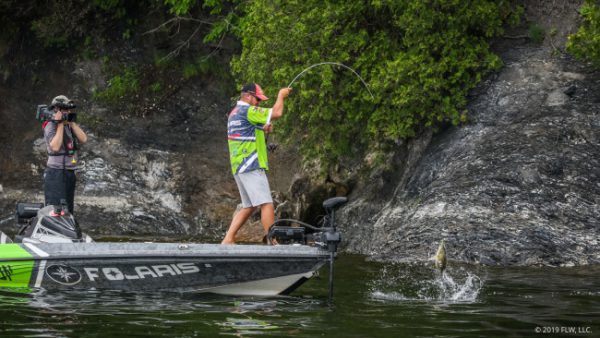
David Dudley
7. AOY Dudley bed-fishes for smallies
To sew up his fourth FLW Tour Angler of the Year prize, Virginia pro David Dudley fished for spawning smallmouths and weighed in 20 brown bass in four days. He ran new water each day.
“I think out of the 20 bass that I weighed in, 18 of the 20 I was looking at, and only two came just fishing,” Dudley says.
“They’re spawning all over. Basically, all I did – and I know it’s a no-brainer – I just went wherever it was calm. They were spawning all over the lake, so I didn’t have a specific area. If it was a calm bank I’d just put the trolling motor down there. The biggest key is just being able to see them. And I’m color-blind, so it’s hard for me to see them. I just would see a bed, and I’d turn around and pitch at it. It’s not like I saw the fish most of the time. Most of the time I didn’t.”
Dudley caught his fish with a straight-tail worm on a Ned head and a craw bait.
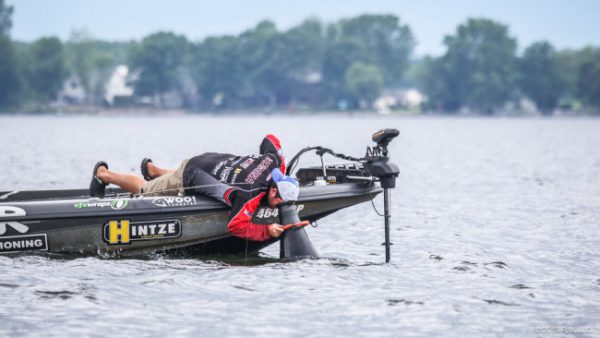
AJ Slegona
8. Slegona “flogs” for spawning smallies
Northern smallmouth expert AJ Slegona used a Flogger (bathyscope) to locate spawning smallmouths on Champlain’s north end for four days. On the final day, an electrical problem at the place Slegona was staying prevented his batteries from taking a full charge, so he had to adjust.
“Basically, every day of the tournament I had pretty much my weight set up for each day,” Slegona says. “By today [Sunday] I had about 16 pounds to go to, and I planned on ‘flogging’ most of the day to keep plucking and catching until I had a bag. But my trolling motor batteries were completely dead with four hours to go, so I just ended up drifting around and chunking a spinnerbait on the windiest points and areas I could find.”
Slegona found smallies within 10 miles either direction of Plattsburgh on typical spawning targets such as isolated boulders, areas with shells and cracks in rocks – all in 6 to 12 feet of water.
“My usual spawning areas were kind of slow early in practice, but they were actually prespawn at that time,” Slegona says. “So all the big ones were pulling up throughout the tournament.
“I was going to areas during the tournament that didn’t have a bed on them in practice. I just kept making my rounds.”
The New York pro caught his fish on a 3-inch green pumpkin or black wacky-rigged Yamamoto Senko on a drop-shot rig with a WOO! Tungsten weight.
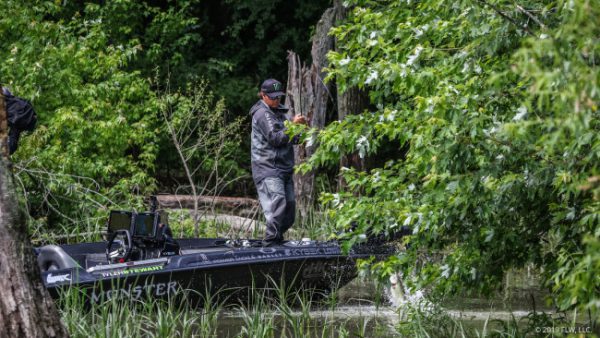
Tyler Stewart
9. Stewart sticks to the shallows at Ti
For three days, Louisiana pro Tyler Stewart’s Ticonderoga waters produced tournament-leading largemouths. Unfortunately, fishing pressure really weighed on Stewart’s best areas, and by the final day he wasn’t able to connect with the same quality of fish.
Stewart fished a point, a large culvert and a bridge along a railroad bed to get a limit in the mornings, then flipped trees and bushes on the main lake to upgrade. Flipping produced his biggest bass.
“I think the fish [on wood] were so shallow that a lot of guys overlooked them,” Stewart says. “What was weird was those fish acted like they were spawning. I don’t think they are, but you had to leave the bait in there for a long time. You could fish an area and not get a bite, then come back and get two or three bites.”
Stewart’s primary baits were a V&M J-Bug in watermelon red Texas-rigged with a 3/8-ounce weight and a 6th Sense Crush square-bill crankbait in chartreuse and blue.
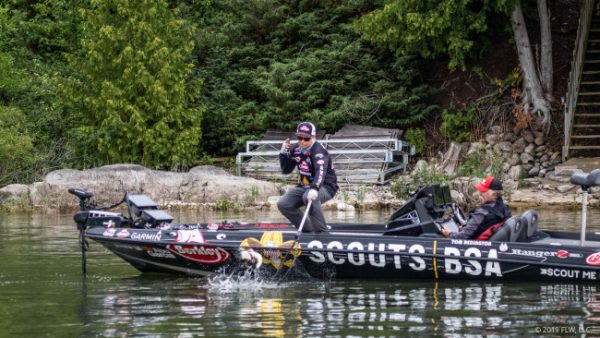
Tom Redington
10. Redington goes camping in Ti
Also in Ti, and also keying primarily on one main-lake area, Tom Redington fished his way into the top 10 with three solid limits of mostly largemouths (he caught one smallmouth to upgrade up north). On day four, muddy water blew out his spot, and he weighed only three keepers.
“Guys were fishing the riprap or they were milling around, but the fish were on the inside grass line,” Redington says. “The thicker clumps where that inside line was; they were spawning around that.”
Redington dialed in on a section of the inside line where the milfoil started to thin out and open up more.
“If it was sunny, the females would be suspended right under the clumps, so you could kind of punch it like ‘light-duty punching.’ If it was choppy or more overcast and windy, then you would catch the spawning fish, but you just had to drag around for them,” Redington says.
Redington punched with a junebug red Berkley PowerBait Power Hawg Texas-rigged with a 3/8-ounce weight. As the water started to clear and they got pressured more, he fished a Texas-rigged junebug Berkley PowerBait MaxScent The General, starting with a 3/8-ounce weight, then lightening up to a 1/8-ounce weight to slow down the presentation.
